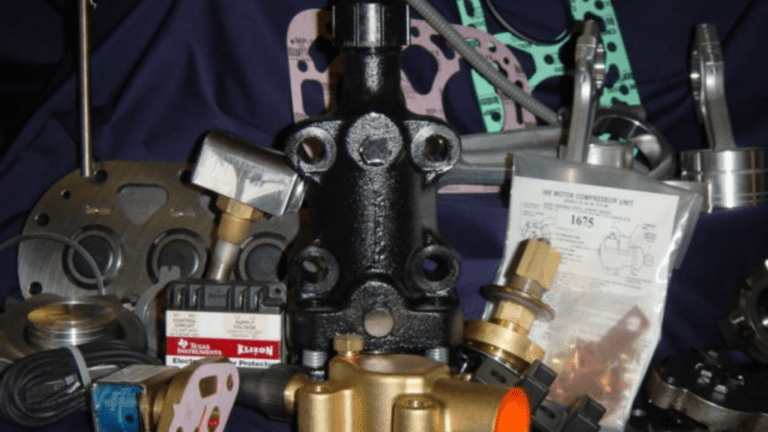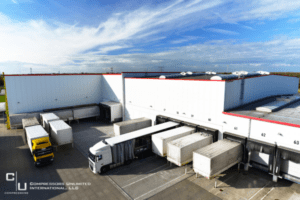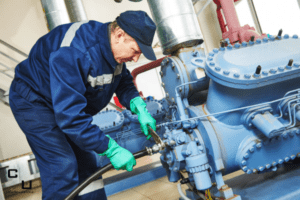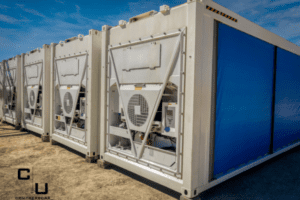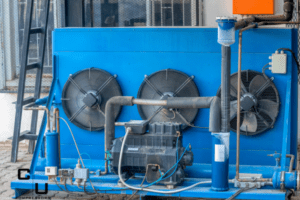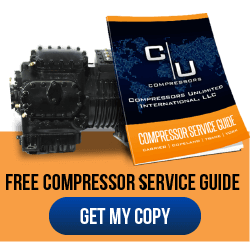No matter if you have an industrial HVAC or a large scale refrigeration system, any business that relies on the service of a compressor should have spare parts ready. Spare parts often make the difference between resolving an issue immediately or having extended system downtime.
Spare parts are also good for enhancing the performance of your compressor and keeping it going at peak efficiency. When you perform your regular compressor maintenance, be sure you document any component replacements you must make.
That can help you track down problems in the future.
Even if you have a backup commercial compressor ready and waiting to go, you should still have spare parts. A commercial compressor should operate anywhere from eight to ten years with an appropriate maintenance schedule. Minor mechanical issues before this time can usually be solved.
At Compressors Unlimited, we maintain a full selection of commercial compressor spare parts including polyester and alkabenzine oils, gaskets, suction and discharge service valves, and many more. But you might wonder which parts are actually the most important for you to have stockpiled.
Based on our years of experience with all of the top commercial compressor brands in the United States and Europe, we have noticed certain patterns when it comes to the common mechanical issues that our customers face. So, we’ve developed this “short list” of parts you should always have.
Let’s take a closer look:
1. Unloaders
Compressors operate at their best when the pressure trapped inside the cylinder head assembly or the discharge line is released following every cycle. As pressure builds, it adds additional load to the start-up process, which elevates the starting torque of the motor.
The unloader valve is a small component, usually just about three to four inches. It connects to the cylinder head assembly or the discharge line through tubing terminated with an appropriate fitting. Its main function is to decrease the starting load by providing for pressure release.
It can also create a more granular means of capacity control in HVAC applications that operate under highly variable thermal load (responding to occupancy, lighting conditions, and so on). In this situation, the unloader can result in fewer compressor cycles and better energy efficiency.
2. Valve Plates
Valve plates serve as the seals between different pressure zones within the compressor. They open as the right differential pressures are reached between two zones. This allows gasses to flow effectively from high to low-pressure regions during the compression cycle.
While the compressor itself does the initial work of raising the pressure of refrigerant gas, the system must be fully outfitted with the right valve plates for the refrigerant to flow efficiently throughout the entire cycle. They are designed for high resistance to both cyclic and impact fatigue.
Valve plate damage is one of the most common issues that reduce compressor efficiency. It can even cause the compressor to fail. It’s always valuable to have extra valve plates at your workplace, but it is especially crucial if you deploy reciprocating compressors.
3. Crankcase Heaters
Crankcase heaters are used to prevent refrigerant migration and to keep refrigerant from mixing with the lubricating oil. They do it by ensuring the oil is maintained at a high enough temperature. This is a simple component consisting of a long, thin electrical heater attached to an adjustable strap.
The heater can be oriented around the crankcase housing regardless of its exact size. In the event the heater fails, refrigeration migration will drive down the crankcase pressure on the next startup. This causes foaming in the crankcase and can lead to severe compressor damage.
4. Piston Rings
Piston rings are another essential piece for a reciprocating compressor. They are the component that actually makes contact with the walls of the cylinder. Each piston ring has particular additives intended to improve its performance qualities. Keeping them fully lubricated and replacing old, worn out piston rings promptly are both absolutely critical to ensuring they operate as expected. Although piston rings are not normally replaced in the field, it is still good to have on-hand.
5. Bearings
A variety of bearings are located all throughout a commercial compressor. The specific ones used depend on the compressor’s design and its intended application. For example, reciprocating compressors use journal or hydrodynamic bearings. These incorporate supply holes in the circumference and are sized to prevent overheating by facilitating the flow of oil. Bearings are difficult to replace in the field, but it is good to have on-hand if this needs to be replaced, if the ability to bring the compressor into a workable environment.
Get Your Compressor Spare Parts from a Team You Can Trust
Compressor spare parts should be sourced from a business you can trust. If you use a remanufactured commercial compressor, inquire about the spare parts that are best for your specific brand and model.
A remanufactured commercial compressor undergoes a detailed engineering process that brings it back up to all relevant performance and environmental standards at a fraction of the cost. With spare parts on hand, remanufactured compressors are ready for another decade of faithful service.

